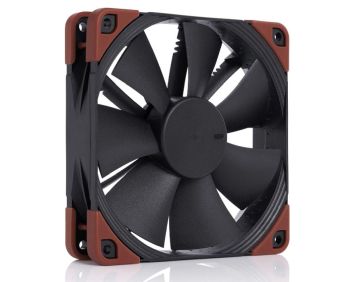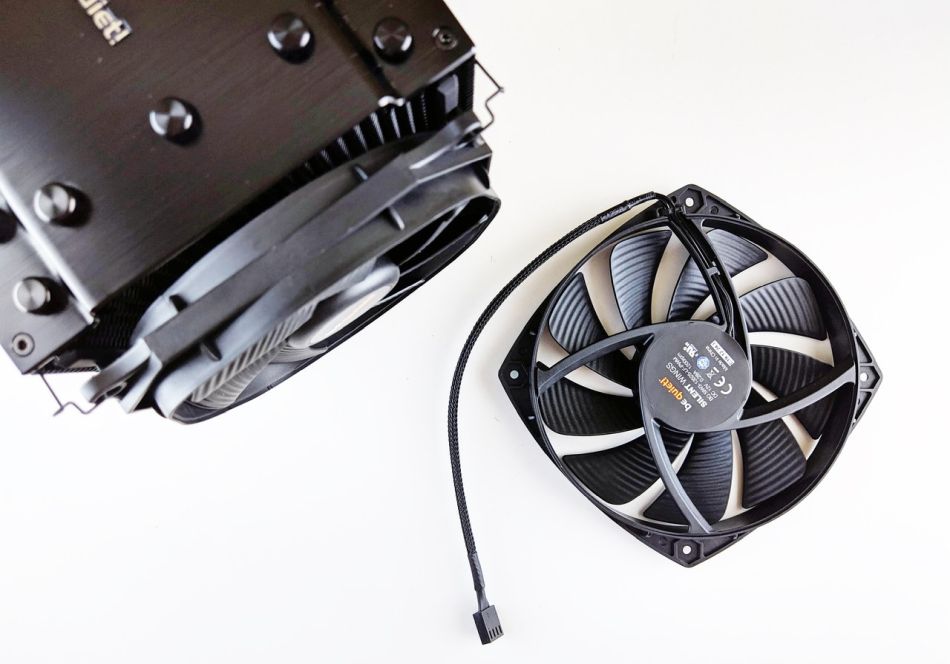“How many fans do I need for my gaming PC?” is a question that all dedicated gamers ponder when in the process of building or upgrading a gaming computer. After all, discharging the heat generated by your PC’s hardware—CPU, GPU, and the like—is integral to a smooth, hitch-free gaming experience.
In this post, we shed light on the importance of case fans as well as point out the number of case fans your gaming PC needs to run smoothly without the risk of overheating. Stick around.
How Many Fans You Should Install in Your Gaming PC
To make a long story short, we suggest installing a minimum of three case fans in your gaming PC. Note that this doesn’t include the fans associated with your GPU, CPU, and power supply.
You’re probably wondering, “Where should I install each fan?”
The first fan should be installed at the bottom front of the case, somewhere around the drive bays. It’s going to serve as an intake fan.
The second fan, which will also serve as an intake fan, should be installed on the side of the case, preferably across from the graphics unit.
The third fan should be installed at the rear top, preferably above or behind the processing unit. This fan will serve as the exhaust.
This configuration will draw air in from the front of the case, pass it through the drive bays and around the GPU, then discharge out of the case through the exhaust fan at the top.
Simultaneously, the fan on the side will force air onto your GPU, alleviating some of the heat that the card is producing. The hot air will then be swept upward by the front fan’s airstream and discharged by the exhaust fan.
Spotlight  | Noctua NF-F12 120mm
| Check Price (Amazon) |
Another question you may be pondering is, “Why two intake fans and only one exhaust fan?”
Having more intakes than exhausts helps generate higher air pressure. Put differently, your gaming PC will draw in more air than it can expel through the exhaust. The excess air will seep out of the vents and crevices in the case, which will equalize the pressure and ensure optimal airflow.
Having more exhaust fans than intake fans reverses the path of the air going through the vents and crevices. Instead of seeping out, the air will be sucked into the case. This won’t necessarily hinder your configuration’s cooling capabilities, but it'll attract a lot of dust, dirt, and residue, which will make it hard for you to maintain your PC in the long run.
If you want to take the above-detailed configuration a step further, we suggest installing another fan at the top of the case, preferably near the rear or above your CPU.
How Fast Should My PC Fans Be?
Now that you know the minimum number of fans that should be installed in your gaming PC, it’s time to consider their speed. Ideally, you want to invest in case fans that run at a speed of 900-1,000 RPM. This speed range strikes an ideal balance between noise production and airflow efficiency.
Note that the above-specified speed range doesn’t apply to fans that are associated with core components such as the CPU, GPU, and so forth.
In fact, the vast majority of CPU fans run at around 3,000-5,000 RPM.
Please keep in mind that all of the case fans should run at the same speed to ensure an optimal flow of air. If you install fans of different speeds, they may generate a negative airflow, which can do more bad than good.
Another thing that you ought to keep in mind is that running your case fans at maximum speed can take a toll on their lifespan.
This, of course, boils down to the quality of your fans. The more high-quality they are, the longer they’ll last.
Case fans are there to increase the lifespan of your computer. So, even if you do run them at full speed and decrease their lifespan, you shouldn’t feel bad about it as long as your PC’s core components are in tip-top condition.
That being said, you shouldn’t spend a whole lot of money on case fans, as you’ll most likely replace them at some point in time. So, stick to cost-effective fans that are fast enough to keep your PC running smoothly.

What Size Case Fans Should I Get?
The size of the case fans is another crucial factor that can influence your configuration’s cooling capabilities. Case fans come in a range of sizes, from 80mm to 200mm and beyond.
The two most popular sizes are 120mm and 140mm fans, with the former being the most popular. Yes, bigger doesn’t mean better when it comes to case fans.
140mm fans release more air than their 120mm counterparts, but they don’t spin as fast. The faster a case fan can spin, the cooler the airflow and the more efficient the entire ventilation process becomes.
Having said that, opting for 120mm case fans will most likely be your best bet. Just make sure your PC is compatible with the size you’re looking to get, seeing as certain fan sizes are more widely supported than others.
How Many Case Fans Is Too Many?
We’ve already established that you need 3-4 case fans to keep your rig well-ventilated.
Is it okay to install more fans, though? Will installing more fans deliver better ventilation?
Well, not necessarily.
PC fan ventilation is all about pressure. Installing more fans than needed can produce negative pressure, and negative pressure tends to produce more potent thermals than positive pressure. To put it differently, positive pressure prevents the formation of hot air pockets, whereas negative pressure allows hot air pockets to form.
What’s more, the more potent the negative pressure, the more it’ll allow dirt and debris to enter your case through vents and tiny crevices. So, you shouldn’t go overboard with case fans; 3-4 fans is enough.
Sometimes you can even get them in a 3-pack: like this set of 3 Corsair RGB 120mm fans.
Can My PC Run Smoothly With Two Fans?
If you have a low-end gaming computer, then having two case fans—one intake and one exhaust—will do just fine. In this case, you should position the intake fan at the bottom front and the exhaust fan at the top rear.
On the other hand, if you have a high-end PC that houses power-hungry hardware, a two-fan configuration won’t suffice. You’ll need 3-4 fans, as we mentioned earlier.
Regardless of how demanding your rig is, you only need one exhaust fan. The rest should serve as intake fans. To add, you should avoid crowding the top or bottom of your case with fans. The fans should be positioned strategically, as indicated above, to ensure effective cooling.
Conclusion
To sum up, you need 3-4 fans to keep your PC running smoothly. This doesn’t include the fans that are dedicated to the PC’s core components, such as the CPU and GPU.
If you’re running a low-end gaming computer, you can get away with only two fans. Just make sure they’re positioned properly so that they don’t battle each other and prevent effective cooling.
With regard to size, 120mm case fans seem to be the most popular for gaming PCs. You can go for smaller or bigger fans, but make sure your PC can support the size you’re looking to buy.
Lastly, speed-wise, you should opt for case fans that run at a speed of 900-1,000 RPM. This speed range will help keep the noise levels at a minimum while keeping your PC well-ventilated.
- Big and Tall Gaming Chairs – Ultimate Buyer’s Guide - December 8, 2022
- How Many Fans Do I Need for My Gaming PC - October 6, 2021
- How Many Amps Does a Gaming PC Use: Accurate Explanation - October 5, 2021
